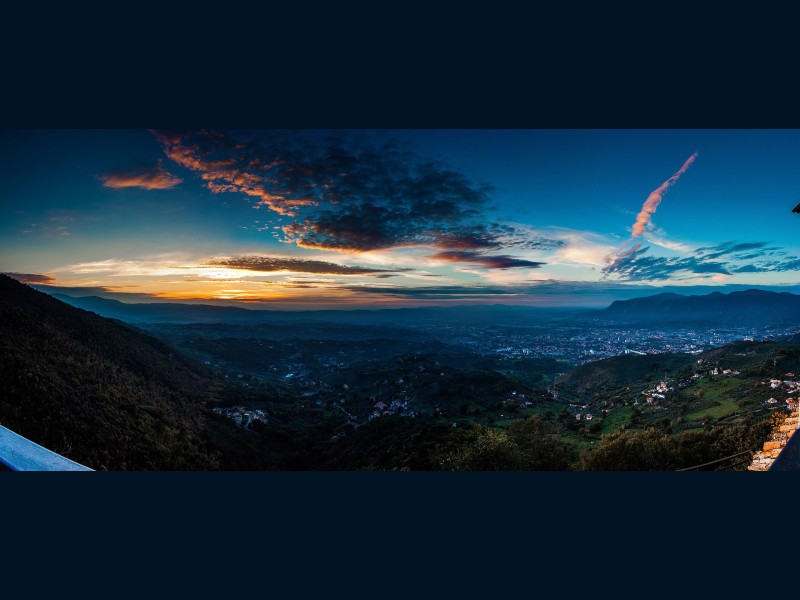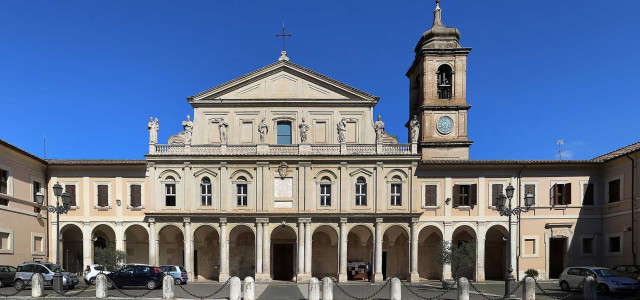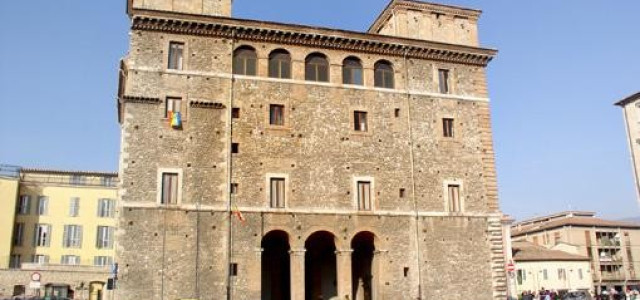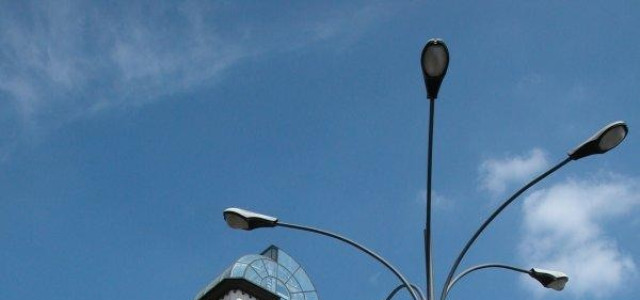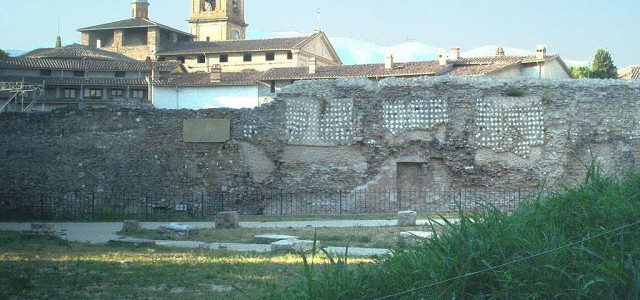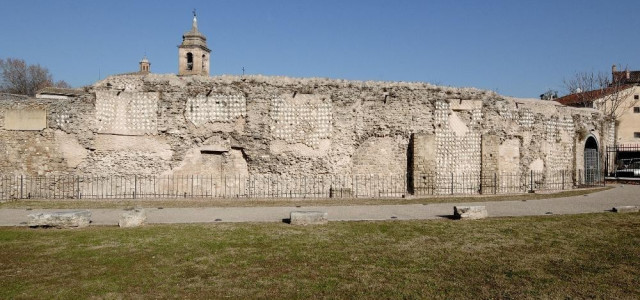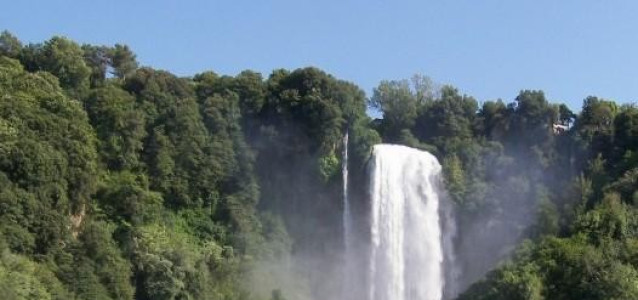Terni
Terni listen (Latin: Interamna Nahars) is a city in the southern portion of the Region of Umbria in central Italy. The city is the capital of the province of Terni, located in the plain of the Nera river. It is 104 kilometres (65 miles) northeast of Rome. Originally founded as an Ancient Roman town, the city has changed across the centuries. During the 19th-century, steel mills were introduced and led the city to have a role in the second industrial revolution in Italy. Because of its industrial importance. the city was heavily bombed during World War II by the Allies. It still remains an industrial hub, and has been nicknamed "The Steel City" and the "Italian Manchester". Terni also advertises itself as a "City of Lovers", as its patron saint, Saint Valentine, was born and became a bishop here and the remains are preserved in the basilica-sanctuary in his honor. History The city was founded around the 7th century BC by the Umbrians, in a territory inhabited (as testified by archaeological excavations of several necropolises) as early as the Bronze Age. In the 3rd century BC it was conquered by the Romans and soon became an important municipium lying on the Via Flaminia. The Roman name was Interamna, meaning "in between two rivers". During the Roman Empire the city was enriched with several buildings, including aqueducts, walls, amphitheaters, temples and bridges. After the Lombard conquest in 755 Terni lost prominence when it was reduced to a secondary town in the Duchy of Spoleto. In 1174 it was sacked by Frederick Barbarossa's general, Archbishop Christian of Mainz. In the following century Terni was one of sites visited frequently by St. Francis to give sermons. In the 14th century Terni issued its own constitution, and from 1353 the walls were enlarged, and new channels were opened. As with many of the Italian communes of the Late Middle Ages, it was beset by civil unrest between the partisans of the Guelphs and Ghibellines, and later between the Nobili and Banderari. Later it joined the Papal States. In 1580 an ironwork, the Ferriera, was introduced to work the iron ore mined in Monteleone di Spoleto, starting the traditional industrial connotation of the city. In the 17th century, however, the population of Terni declined further due to plagues and famines. In the 19th century, Terni took advantage of the Industrial Revolution and of plentiful water sources in the area. New industries included a steelwork, a foundry, as well as weapons, jute and wool factories. In 1927 Terni became capital of the province. The presence of important industries made it a favorite target for the Allied bombardments in World War II, totalling 108 raids. Despite this, industrial environment increased quickly after the war. Economy The city has three important industrial hubs: the first one is the Stainless Area, called AST (part of the group ThyssenKrupp) and is a wide area located in the east part of Terni. West of the town, there is a second industrial hub, known as "Area Polymer", with four different chemical multinational industries. The third industrial hub is the "TERNI Research", which produces technologies employed for green energies and constructs green power plants in Italy. Transport Terni is connected with the A1 motorway, the National Road Tiberina and National Road Flaminia by the RATO, a motorway junction. Terni railway station is part of the Ancona–Orte railway, and is also a junction station for two secondary lines, the Terni–Sulmona railway (which links Terni with L'Aquila) and the Terni–Sansepolcro railway (FCU) (which serves Perugia). One of the most important national freight stations is located nearby. The local urban and suburban transport service, ATC, runs 90 bus lines. In the north of the city (Colleluna zone), there are works in progress on the line from Perugia to enable it to be used as a Light rail line. Main sights Roman amphitheater, once capable of 10,000 spectators, built in 32 BC. Porta Sant'Angelo, one of the four Ancient Roman Gates to the city, much restored. Terni Cathedral (Duomo, Cattedrale di Santa Maria Assunta) (17th century). Built over one of the most ancient Christian edifices of the city, it has today Baroque lines. In the interior is one organ designed by Gian Lorenzo Bernini. The belfry is from the 18th century. The façade has two mediaeval gates: one of them has the profile of a sabot once used to measure the citizen's shoes in order to ensure that they did not exceed a fixed limit of decency. San Francesco - 13th-century church The Basilica of S. Valentino. Palazzo Mazzancolli is one of the few remains of the Middle Ages past of the city. Palazzo Gazzoli (18th century), housing the City's Gallery with works by Pierfrancesco d'Amelia, Benozzo Gozzoli, Gerolamo Troppa and Orneore Metelli. Palazzo Spada (16th century), designed by Antonio da Sangallo the Younger. It is the current Town Hall. Lancia di Luce ("Lance of Light"), by the sculptor Arnaldo Pomodoro. The Romanesque churches: Sant'Alò (11th century). San Martino. San Salvatore. Nearby, at the confluence of the Velino and Nera Rivers, is the Cascata delle Marmore, a 165 m waterfall. Notable natives Marcus Claudius Tacitus, Roman emperor Saint Valentine, Bishop and martyred saint Saints Berardo, Ottone, Pietro, Accursio and Adiuto, Franciscans protomartyrs Aminale Lodovico, a Terni's knight who fight with other twelve Italian knights in the famous Challenge of Barletta (1503), against the French Francesco Angeloni, Historian and writer Baconin Borzacchini, Grand Prix motor racing driver Giulio Briccialdi, Composer and flautist Alessandro Casagrande, Composer and pianist Aurelio De Felice, Sculptor Ettore Patrizi, Publisher, L'Italia Libero Liberati, 500 cc racer Danilo Petrucci, Moto GP racer Paolo Tagliavento, International football referee Stefano Micheli, Musician ("My Mine") The Roman historian Tacitus is often stated to have been born in Terni, but there is no evidence for the claim, which is circumstantially based on the probable birth there of the emperor of the same name, and on the attested fact that that emperor took care to have his namesake's works widely copied, in the apparent belief that they were related. International relations Twin towns — Sister cities Terni is twinned with: External links Official website AboutTerni.com Terni city portal Terni Oggi Terni at UmbriaTravel.Com References
